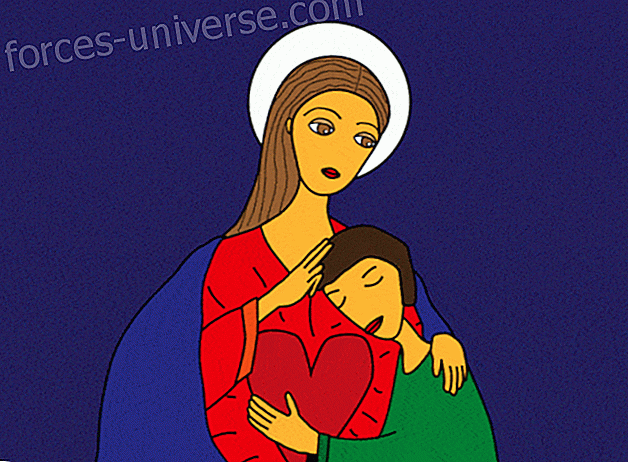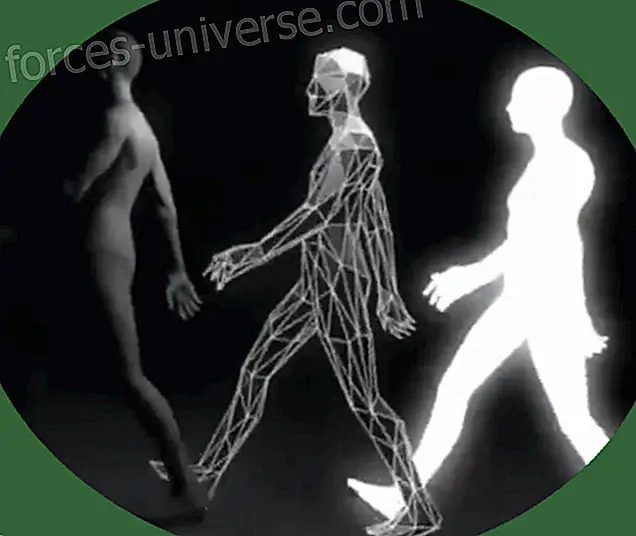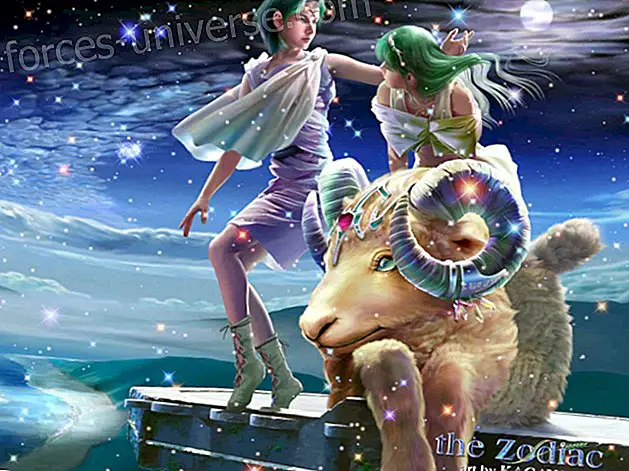The Natural 
eza Basic Essence l
Our essential nature is what we are when we are free from the experience of the past; It is our innate nature and an unconditioned state of consciousness. It is our childhood state, and it coexists with the particular characteristics of our soul ( tenderness, clarity, strength and others). When we are babies, we do not have the ability to know that this is our experience, we have not yet developed the ability to reflect. The process of losing contact with our essential nature is universal: all who develop an ego have to go through it, all human beings on the planet, unless one is born holy or crazy, develops an ego structure. We need to confront ourselves to reconnect with our essential nature.
-
- The basic principle that initiates the development of the ego : the loss of contact with our True Nature gradually during the first years of life, upon reaching four years, the perception of the essence has been almost completely lost and begins the development of the framework that structures the ego. This structure is a prerequisite to spiritual development since part of the ego's achievement is introspective consciousness . Without it we could not realize our own conscience.
- factors that lead to this loss of contact with the Essence :
Identification with our bodies : The beginning of cognition originates with the differentiation between pleasant and unpleasant sensations, and any trace of memory of these impressions is recorded gradually in our developed central nervous system. Through the repetition of these impressions, memory begins to form. Striving to achieve pleasure and avoid pain is the fundamental principle that underlies the structure of the ego. The sense of the interior versus the exterior, the repeated contact of the environment with our skin leads us to a preliminary feeling of being a separate and distinct entity. This feeling of separation, defining ourselves with unquestionable boundaries and boundaries - constitutes another fundamental and characteristic belief of the ego structure. The beginning of introspective consciousness begins with physical impressions, and our sense of who and what we are ends up identifying with the body. The ego is first and foremost it is a bodily ego. This identification with the body and that its difference defines who and what we are, disconnects us from the consciousness of our early childhood in which everything was experienced as the whole. When we identify with our bodies and with our separation, instead of experiencing ourselves as unique manifestations of a thing, or as different cells of the unique body of the universe, we come to experience ourselves as independent and disconnected from the rest of reality.

Stage of ego development or fall:
The True Nature of our soul is unique, the characteristics it manifests are transformed, or change with which we are most in touch at any given time. The quality of the Essence that manifests depends on the external situation in which we find ourselves or arises in our inner process. Compassion arises within us in the presence of a friend who is suffering. The child experiences many qualities of the Essence, some become predominant in specific stages of development.
- Symbiosis (2 to 6 months) most notable aspect of ecstatic love, sweet feeling of being molten and united to everything, happy feeling of union that adults seek to recover through falling in love.
- crawling (6 or 7 months) internal sense with which discriminates between him and the mother, as if "out of the egg" of the symbiotic orbit. There is an energetic expansion, feeling of strength and capacity.
- explore your world touch, test and manipulate objects and people, feeling of delight and curiosity without limits.
Any fracture or trauma during that stage of development affects our relationship with the associated Essential Aspect, weakening its contact. These fractures become part of the story that is stored in our bodies and souls. Loss of contact with our depths is what they call the fall. It does not happen suddenly but gradually during the first four years of childhood
- In the end a kind of critical mass is reached, the entire essential world vanishes from our consciousness. The fall is not a true loss of Essence; We simply lose contact with her. The essential world is present, we have only "forgotten" or erased it from our conscience. It is inseparable from who we are but it has remained in our unconscious. One way to contemplate spiritual development is to make the unconscious conscious. In the normal consciousness, the essential world is covered by the deepest stratum of the personality (repressed contents-instinctive impulses-memories-fantasies related to them) Each Aspect of the Essence is submerged in the cauldron of the unconscious, little by little we go losing contact with that precious part of us; in fact what makes us really worthy of being appreciated. With each aspect that is lost we feel that something is missing, experiencing a sense of lack interpreted as deficiency: "There is something missing in me there is something wrong in me", as if there were holes in our consciousness where there should be something that integrated them, feeling of empty places. As these holes are formed by the loss of Essential Aspects, the balance leans toward a general feeling of emptiness and deficiency that forms the core of the inner experience of most people. Deficiency state of the experienced ego as:
- feeling worthless, not deserving, being small, weak,
- feeling completely incapable, helpless, inadequate, useless, without support. Deeper layer and deep personality experience.
Personality is a sense of self lacking its foundation - Essence - and therefore we can only feel deficient .
Copyright © 2009 All rights reserved to Counseling Transpersonal Generation Empathy Registration Number 2299158
Nonviolent communication
Joseph Zinker in his Theory of Conflict, talks about intrapersonal and interpersonal conflict, as a space-time, learning potential, while allowing differentiation in relation to one's own limits and those of others. Thus distinguishes:
Unproductive or confluent conflict, where there is no possibility of understanding, and where the blame for everything else appears, clearly involving two manifest forms of defense, repression and projection n . It is projected what is unable to face within itself and represses the possibility of responding by taking responsibility for the part that corresponds, the other is accused. Here is always the belief that one wins and the other loses, as a corollary of this type of involuntary conflict , polar, narrow, poor and fragile responses appear. It largely involves an incongruous self-concept, as long as it sees itself in a stereotyped form (I am this and never that), with a multitude of limited forces and sensations and with a perception lacking fluidity and breadth, being vulnerable to attack.
Healthy or creative conflict, when there is a clear feeling of being different and a clear impression of disagreement, but where diversity is tolerated and even more so to be seen as enriching. This type of conflict appears between integrated and self-aware people of their limitations and capacities, taking charge without repression or projecting their own mistakes and their consequences. Conflictive that if handled with skill produces, as a side effect, good feelings among people . Here there is awareness that both lose and win, according to how they process the conflict. It involves a healthy self concept as long as the person is consciously aware of opposing forces within him, and possessing various parts in the game.
Zinker says that every interpersonal conflict derives from the intrapersonal or intrapsychic conflict . When an individual represses the consciousness of his own being and projects it on another, he finds it easier to see the unacceptable, annoying or disturbing in the other than in himself. It is easier to fight with another than with oneself. The struggle with oneself is fought alone and provokes a quota of anxiety that it seems they were not willing to pay, so that the other takes charge.
It is less painful for some individuals to attack the other, especially if the accusation is not direct or open. Sometimes we tend to attack parts of others worthy of appreciation but too scary for one. If someone dislikes me and their behavior bothers me, I still do not know it in myself, not being able to take a clear position before it, limiting myself only to annoyance. If I were more condescending with my own behavior that I dislike and ignore, I would understand better and the conflict would be more constructive.
The conflict is often established when one attacks the polarity in shadow that the other hides or ignores, evidencing the dark side of the moon that one wishes to refuse, because it is threatening. The competition is the brother cousin of inferiority, while one feels inferior he must proclaim and demonstrate (prove) his ability, however if he feels adjusted to his evolution he will not make comparisons or engage in competencies, but will relate from his being maturely in any Sure stage of life.
Zinder advises us to work with conflicts, two key guidelines:
1- teach to become aware of the dark side of himself, that the other comes to represent, what we call the adversary-teacher, since with his resistance he comes to show parts of us that we do not yet enable or recognize and that would be of very useful for us to integrate them.
2 - teach how to empathize with the space where the other person lives and speak from that place where he will be heard, and empathize with our parties that through intrapersonal conflicts we are evidenced by intrapersonal unresolved conflicts.
We understand non-violent communication to the communicative ability that reinforces human capacity even under limited conditions, trying to respond instead of reacting, from acquired habits or unprocessed automatic impulses. Responding consciously makes a difference in any communication, since the answer is anchored on perception, meaning and sensation. Identifying and expressing with certain clarity their own needs and desires, it greatly facilitates communication, avoiding interpretations, projections of beliefs or preconceptions. Of course, for this it is required that previously, we have clear our desires and needs (authentic intra-psychic communication) and we have found the best way to represent us of expression and idiosyncratically communicate.
Clarity in the observation, in the sense and in the needs, instead of judging it is a simple path that leads us to peaceful communication. Listening and listening carefully helps educate the tension and brings light to places where what we are looking for is.
Marshall Rosenberg who developed the concept of “nonviolent communication” (CNV) shows that it is very useful to observe and detect the behaviors and situations that affect us, since “the essence of nonviolent communication is in consciousness, not in the words and that the method to establish this relationship is based on sincerity and empathy ”.
The term sincerity means without wax on the face, without makeup that hides your true face, and together with empathy they make the team so that we communicate by asking and not demanding, facing the frustration of not receiving, but clearly of being able to keep looking without dilating lobbying
Being aware of our objectives greatly collaborates in non-violent communication, knowing what we want saves many inoperative conflicts. “Conditioning focuses my attention on places where I am not likely to find what I am looking for. We live in a culture that uses guilt to control people, a dynamic that misleads us to believe that it is in our hands to make others feel a certain way. The feeling of guilt is a tactic of coercion and manipulation, which confuses stimulation with cause. ”Rosenberg as Rogers investigated and understood the communicative systems of implicit domination in human relationships. Communication thus understood is a form of expression that gradually moves us away from the vitality of existence., Away from what we essentially feel and need.
In Empatic Generation we start from the basis that violence is a learned behavior, it is not intrinsic to the human essence, a concept supported by all humanistic thinking and the great philosophical currents that give rise to the psychological theories presented here.
Copyright © 2009 All rights reserved to Counseling Transpersonal Generation Empathy Registration Number 2299158







